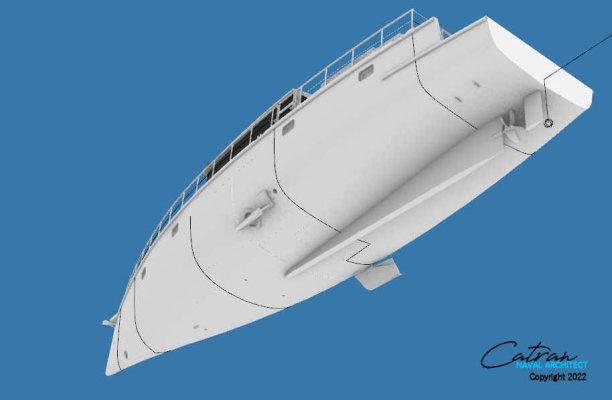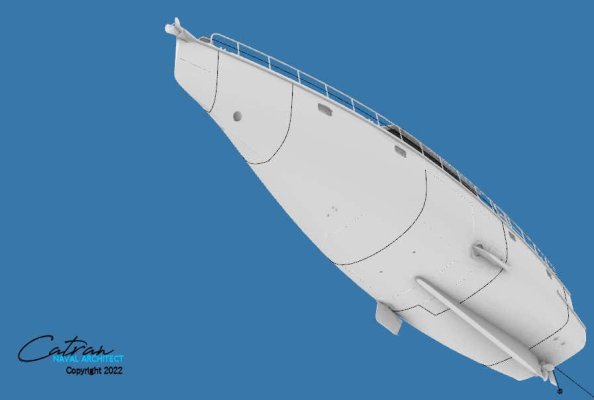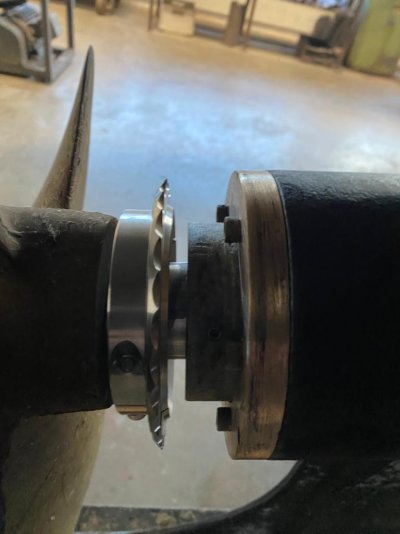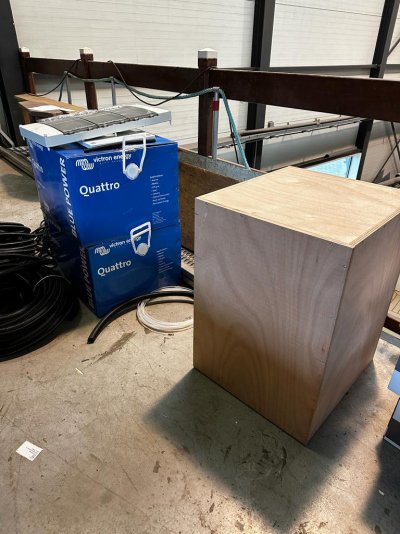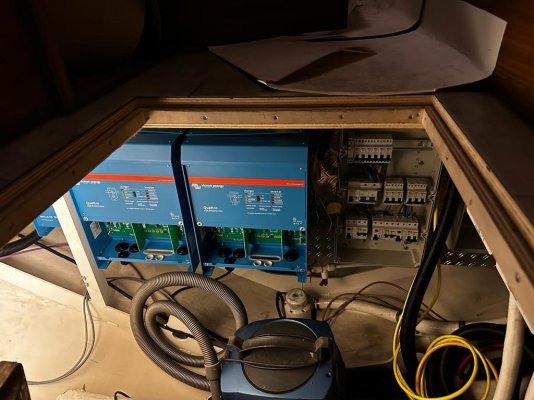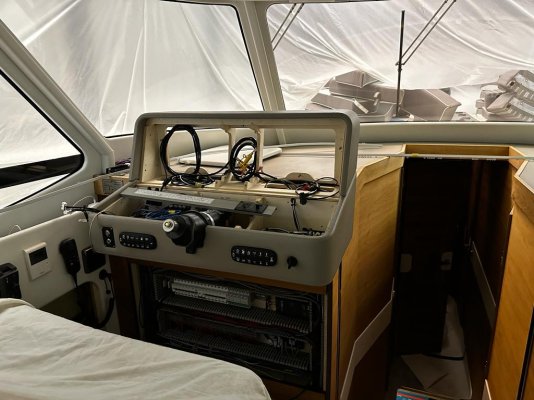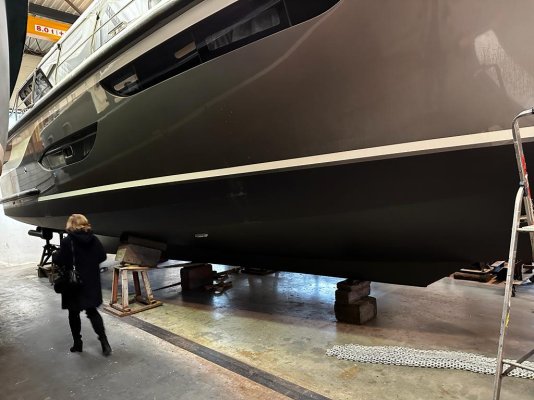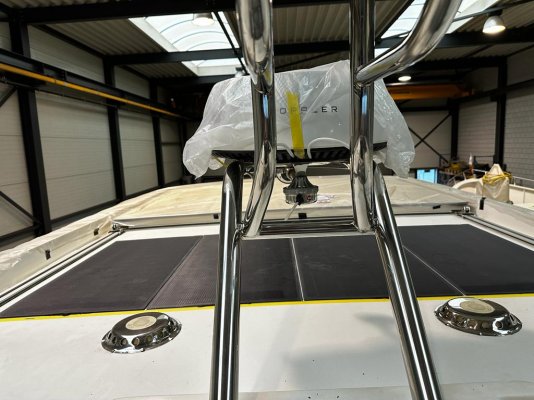Update on "Moonshine" at the shipyard!
So ... with Salty Pelican all but sold and work on the all-new LM65h not yet started ... allow me to update you on our current motor-yacht "Moonshine".
Moonshine currently sits at the shipyard for extensive upgrades. Turned out more things needed to be done. Not just the antifauling, some minor repairs, and a complete suite of new plotters, radar, AIS, and autopilot. Bit more, as it turns out.
There was some slack on the propellor shaft. We expected the bearing closest to the prop to be in need of being replaced, but as the shaft was taken out, it turned out that all three bearings were worn out. At the lower end. Further investigation informed us that the thrust bearing was installed like a centimeter and a half (half an inch) too low, lowering the shaft, and allowing it to eat away at the bearings.
Solution? Reinstall the thrust bearing on its proper location, change all three shaft bearings. And we added a rope cutter in the process. But that was already planned. Pics of rope cutter and spent shaft bearings underneath.
Okay, "buy a boat and work till death", right? In my case the warf does the work, but I have to work to pay for their labor. But this was the easy part. The shaft was the additional work that didn't cost a ton.
What did? Well, having to replace the whole electrical system. That did cost a ton. Or will. What happened? As we sailed the boat from our harbor to the shipyard - like 5 NM's only - I noticed our housebank dropped to 98%, then 96%, then 94%. It does drop, but it never dropped with the engine on. We have two alternators. One of 55 amps (24v) for the engine start batteries. Another one of 70 amps (at 24v) for the housebank and the two additional batteries (one for the bow-thruster and one for the stern-thruster).
Should be enough, right? Even with 2 stove electrical cooking and freshly installed electrical MagnusMaster stabilizers. Only it wasn't. The housebank (a 10.3 kWh traction battery) supposedly died on that small trip from our harbor to the shipyard.
And that was the least of our problems, as it turned out. I mean, we could smell the gas and I decided for once NOT to fire-up a cigar, which probably saved our lives. But more sh*t happened as a result of the housebank/traction battery failing.
It turns out that one management system (there must be a better word) was managing both the housebank and the batteries for the bow- and stern-thrusters. As the housebank died, the management system didn't get any feedback and decided that the logical choice was to now put all the power from the 70 amp alternator into the thruster batteries. And as those were underpowered, that basically blowed them up ... and destroyed quite a bit of the wiring and the converters, etc.
Oxyhydrogen ... hope that is the right word ... formed during our last sail. Normally I smoke a cigar after mooring in a new marine. Somehow, that felt "off" that day. It basically saved us. Had I lighted that cigar, the ship would have probably blown up. And had the batteries not been in a relatively sealed container, the wire burning (with oxygen present) would have resulted in a full-out fire.
All right. We survived. And the two most obvious outcomes didn't come to fruition. Good for us! Now, what's the solution?
We'll get rid of the spent traction battery housebank. The 10.3 kWh unit will be replaced by a 23 kWh LiIon battery bank. The engine starter batteries are fine and will stay. The bow- and stern-thruster batteries will be replaced by much sturdier ones, that are tailored to peak discharge rate ... 'cause that what the (oversized) thrusters need. Each thruster gets 6 optima yellow top batteries.
"Moonshine" will also get a generator. WhisperPower, 12 kW. The generator and batteries are under a management system (yes, one per battery) that will basically be tuned according to our needs. For example, we can tune it like this: if the battery capacity is only 20% remaining, the generator automatically starts and fills the LiIon bank up to 85%. Or: if the system "sees" we are running the stabilizers and cooking stove and airco, it will pre-emptively start to work and deliver additional electricity. Or: if we feel we don't want the generator to kick-in at night, we can push it to charge NOW.
What's more? Well, new, bigger, thicker, sturdier electrical wiring. And - where the 55 amp alternator for the engine start batteries stays - the 70 amp housebank unit will be replaced with a 200 amp version. We want to be able to run most functions - if need be - right from the engine and that's what the 200 amp alternator brings to the party.
Final touch? Four solar panels. Yeah, doesn't really make the ship go around the globe ... but it will allow for the ship to be powered even without shore-power like forever.
Quite the write-up. Hope you enjoy reading about our endeavors and adventures - harbor bound though they might currently be.
Regards, Edwin & Veronika.

